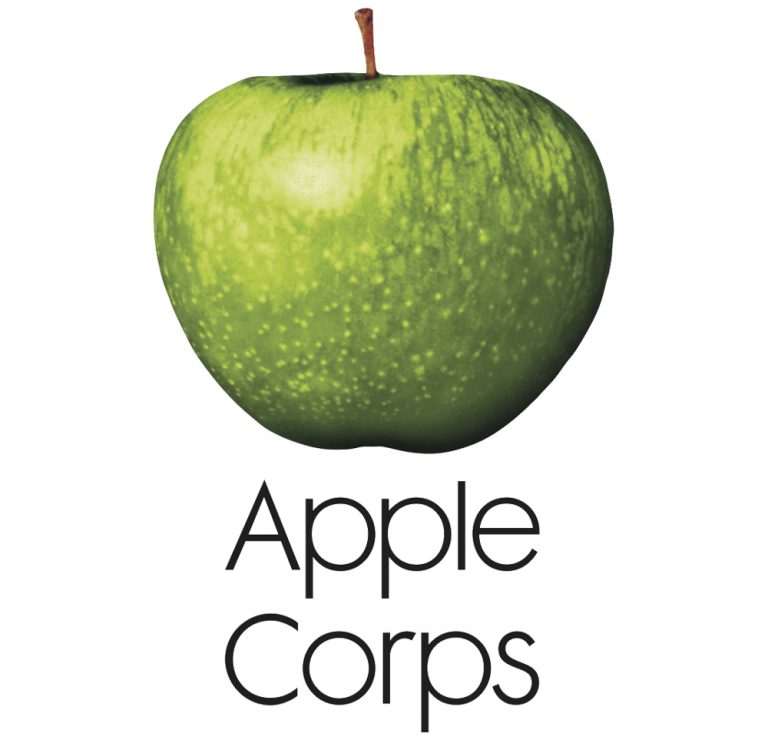
Thursday, December 7, 1967
The Beatles open an Apple shop in Baker Street
Last updated on May 6, 2024

Thursday, December 7, 1967
Last updated on May 6, 2024
Location: 94 Baker Street, London, UK
Article December 1967 • Paul McCartney contributes signing Focal Point for Apple
Article Dec 04, 1967 • John Lennon and Paul McCartney sponsor painting exhibition by Jonathan Hague
Article Dec 07, 1967 • The Beatles open an Apple shop in Baker Street
EP Dec 08, 1967 • "Magical Mystery Tour (UK EP - Mono)" by The Beatles released in the UK
EP Dec 08, 1967 • "Magical Mystery Tour (UK EP - Stereo)" by The Beatles released in the UK
Next article Dec 09, 1967 • Allen Klein says the Beatles might join his new record label
On this day, The Beatles launched their first business venture by opening the Apple shop, which was popularly called “the Apple Boutique”. The name “Apple” was chosen following the recent rebranding of The Beatles Ltd. company to Apple Music Ltd.
The shop’s exterior was decorated with a vivid and colourful psychedelic mural created by The Fool design collective. The group had previously worked with The Beatles, designing the band’s clothing for the 1967 television broadcast of “All You Need Is Love” and the “I Am the Walrus” segment of the Magical Mystery Tour television film. The Fool was also responsible for designing some of the clothing sold in the shop.
The management of the Apple shop was entrusted to John Lennon’s friend, Pete Shotton, and George Harrison’s wife’s sister, Jenny Boyd.
Despite the fame of its owners and the unique style of its products, the Apple boutique struggled to find success and ultimately closed its doors just under a year after opening in July 1968.
We started an Apple clothes shop because we were now dressing in such interesting clothes, and the Fool were making a lot of them. So we said, “Could you make a few pieces that we could take to other people and they could manufacture stuff to your designs?”
Paul McCartney – From “Paul McCartney: Many Years from Now” by Barry Miles, 1997
Clive Epstein, or some other such business freak, came up to us and said, ‘You’ve got to spend so much money or the tax will take you.’ We were thinking of opening a chain of retail clothes shops or some barmy thing like that, and we were all thinking that if we are going to open a shop, let’s open something that we’re interested in. We went through all these ideas about this, that and the other and Paul had a nice idea about opening up white houses, where we would sell white china and things like that, everything white, because you can never get anything white, you know, which was pretty groovy. It didn’t end up like that, it ended up with Apple and all this junk and The Fool and all those stupid clothes.
John Lennon – From “The Beatles Diary Volume 1: The Beatles Years” by Barry Miles
We ended up with a clothes shop. I don’t know how! This group of people, The Fool, suddenly turned up. I don’t know where they came from. I think they came in through Paul or George, and it just went from bad to worse.
John Lennon – From “The Beatles: Off the Record” by Keith Badman, 2008
I realized then that my recruitment to Apple was virtually a fait accompli. Having made up his mind that I was joining the Beatles’ company, John had already told everyone to expect me. Since I couldn’t help but be flattered that Paul seemed equally enthusiastic about the idea, I decided not to put up any further resistance.
Later that evening, I tried to pin John down as to what my role in Apple might consist of. “Well,” he said, “we’re planning to open a clothing shop for starters. Eventually we’ll have a chain of Apple boutiques all over the world, but the first one’s gotta be in London. Since you know all about shops, why don’t you just run that?”
“But I don’t know anything at all about boutiques, John.”
“Well, just have a go at it, Pete. If you don’t like it — then fuck it, we’ll find you something else to do.”
Pete Shotton – From “The Beatles, Lennon and Me“, 1984
My number one priority at Apple was to have the boutique ready by 9 November, since The Beatles had already announced to the world that this was to be the date of the shop’s unveiling. I was left with less than two months in which to organise the entire project from scratch. I was obliged to supervise every minute detail of the shop’s conversion. The electric wiring and the furnishing and painting to the ordering and installation of the cash registers. My task was further complicated by the individual Beatles’ conflicting views on interior design. One morning, for instance, Paul came into the shop and told us where to install a partition. Almost as soon as we had done his bidding, John showed up, took a good look round, and said, ‘What the fuck’s going on in here? What’s all this stuff up for?’ ‘Paul told us he wanted partitions up,’ I explained. ‘Oh, get the fucking lot out,’ John ordered. I don’t want these fucking stupid partitions in here!’ The offending partitions were duly removed.
Pete Shotton – From “The Beatles: Off the Record” by Keith Badman, 2008
Since there was a certain amount of office space on the building’s top floors, 94 Baker Street also came to serve as Apple Corps’ temporary headquarters. The company subsequently rented additional offices at 95, Wigmore Street, before finding its permanent home in the elegant £500,000 Georgian Town House in Savile Row.
Pete Shotton – From “The Beatles: Off the Record” by Keith Badman, 2008
The Fool’s new career as the Beatles’ unofficial costumers and designers began with the “All You Need Is Love” TV sequence. After the Dutch artists worked their wonders on George’s bungalow and John’s favorite piano, the Beatles agreed to bankroll the Fool (to the reported tune of £100,000), and to provide their orgasmic fashions with a commercial outlet — which, as it turned out, I was expected to manage.
Pete Shotton – From “The Beatles, Lennon and Me“, 1984
We were going to open a shop, which was going to be very different, very freak-out, and working on a very marginal profit, because we did not want to be like all the other nasty business people. We wanted to be lovely and kind and give people beautiful things at very low cost. The idea was to run a brand new company in a brand new way, have some fun, hire your friends, have some money, sell some records, sell clothes by The Fool, and make some inventions, and so on.
Alistair Taylor – From “The Beatles: Off the Record” by Keith Badman, 2008
They employed these people from Holland called The Fool. They were four way-out people. Everything that didn’t move, they painted in psychedelia.
Alistair Taylor – From “The Beatles: Off the Record” by Keith Badman, 2008
The Fool came up with this idea to paint the outside of the building, but they wouldn’t tell us what they were going to do. They put scaffolding up, and a tarpaulin, so you couldn’t see what they were going to do. We were all eager to see it, and then the great unveiling came. They took the tarpaulin off and there it was. This absolutely beautiful building was painted in stars, moons and mystical figures. Even the chimney pots were painted. It was fabulous. It was sensational. It naturally stopped the traffic and the press went bananas.
Alistair Taylor – From “The Beatles: Off the Record” by Keith Badman, 2008
One day I was asked to make a payment to a group of designers, called The Fool, and I discovered that they had been given a contract and were being paid a signing on fee of £40,000. I was horrified and I said to them, the boys, ‘Do you know you can get people to come along and give you the clothes on sale or return and you don’t have to pay people £40,000 for this privilege.’ And they turned round and said, ‘Look, as far as we’re concerned, we are The Beatles. We are the biggest thing in the entertainment industry and if we’re going into retailing, we’re going to be as big as Marks & Spencer, therefore we can afford to do this.”
Harry Pinsker, The Beatles’ personal accountant – From “The Beatles: Off the Record” by Keith Badman, 2008
The Baker Street APPLE headquarters building was a dreary affair and the Beatles wanted to do something extra-ordinary with it so they approached us to brain storm the project. We met with the four of them and Brian Epstein in the upper floor offices and a general proposal was worked out that we would paint the building’s exterior and interior and design a manufactured “pret-a-porter” boutique clothing line for ladies, men and children. Apple would also print some of our paintings as lithographs for sale at the venue.
The Carnaby Street culture was a huge influence. As images came to my mind I first made colored concept sketches for the exterior three story high Apple mural as well as the interior staircase design, something out of 1001 nights, for their approval. At the follow-up meeting with Brian Epstein and the solicitors, contract documents were signed and it was decided to open the boutique on December 7, 1967.
Since we had to move around a lot we needed a car and Simon & Barry decided on a used 1961 Bentley in excellent condition even though Yosha and I thought a Mini Cooper would be handier and less expensive. However, there it was, so we had the Bentley painted with the Sun, Moon and Stars emblem on the doors, a blue roof with yellow stars and rose tinted windows; it was a beautiful thing.
John suggested the first thing needed was a poster incorporating the slogan “A is for Apple” to advertise and promote the Apple boutique’s upcoming opening. I conceived of it as a magician offering an apple to the observer, then painted it in gouache on board. Simon helped with the green spectral background and gemstone execution. Everyone raved about it and it was consequently printed as an unlimited edition lithograph.
Apple also produced thirteen other lithographs of our existing original paintings and gouaches as well as some prints by other artists such as Alan Aldridge and Martin Sharp. Outfits by designers Lord John, Tara Brown and others could also be purchased at Apple.
The Genie on the west wall of the Apple building came to me as a vision in a dream, representing a synthesis of the mythologies of different cultures and ethnicities, influenced by hallucinogens. I considered how to make everything happen in a timely manner so for the exterior I proposed to use the grid technique to transfer the design to the wall, the best choice for this design. The grid method involved drawing a grid over my reference image, (a line version of the concept sketch) and then a grid of equal ratio on the white primed wall surface of the building.
We marked the desired size increments across the top, bottom and both sides of the wall and then used a snap-line to “draw” the lines across the wall. After I could draw the image outline in black paint on the wall, focusing on one square at a time, until the entire image had been transferred. Thereafter it was colored in like a coloring book referring to the original sketch. All the murals were painted with high gloss oil based enamel house paint, (now outlawed because of its lead content).
The exterior was completed over one weekend, executed by the members of the Fool and a few art students whose names I don’t recall, except for Mickey Finn, later the drummer for Marc Bolan. Simon painted the graduating spectrum panels on the pillars and lintel stretching over the entrance and beneath the windows of the building. Monday morning the spectacular mural caused a traffic jam and the respectable burgers of Baker Street mumbled “what is the world coming to”…. Everyone now knows that Apple never obtained a permit and the city counsel of Westminster ordered the mural painted over after seven months.
The interior murals were painted “free hand” by Simon and myself in a few weeks. We always did work well together. Yosha and I designed all the clothing, chose the materials and had them manufactured from our sketches. While Simon and I were busy painting, Yosha, as dedicated to hard work as I am, was in charge of the manufacturing of the clothing line and Barry overlooked the construction by carpenters of the staircase and was a general liaison/quarter master.
We thought it was important to have multi-ethnic mannequins and these were custom ordered for the window displays and once installed, caused some disturbing negative reactions in the press. When the manufactured garments arrived we did some publicity photo shoots of the outfits with the photographers Ronald Traeger and Karl Ferris, modeled by Patti Boyd, Cynthia Lennon, Maureen Starsky, Jenny Boyd, Anke Ferris, Charlotte Martin and several other beautiful models.
Once all the painting on the Apple building was done, because Simon and I had connections in Morocco, we made a short weeklong trip to Marrakesh to buy more necessary inventory for Apple such as local musical instruments, ethnic jewelry and accessories. John’s old school friend Pete Shotton, designated the Apple store’s manager, came along as the officialbuyer.
We stayed at the magnificent “La Mamounia Hotel” in Marrakech and scoured the souks for appropriate items. Yosha and I chose some interesting fabrics, jewelry and fancy slippers. Pete conducted the business deals with the Moroccan vendors, aided by Simon & Barry, and handled the shipping but unfortunately, for some reason a lot of the merchandise never made it back to London. Of course the Fool was implicitly blamed, the ideal scapegoat.
For the opening of the Apple boutique by nightfall on December 7, 1967, we proceeded on foot from Montague Square with a parade of dressed up friends and their children playing drums, bells and flutes to Baker Street, not far away, to arrive at the Apple building which was bustling with famous and not so famous people drinking apple juice, music blaring, press cameras clicking away.
Twiggy marked the moment by biting into a big Golden Delicious apple and John was declaring the whole thing to be well done! The press was in an uproar, some people thought it was fantastic while others were appalled by this “Shock of the New“, to quote art critic Robert Hughes.
We intended Apple to also be a cultural center including art shows, lectures, poetry readings, music nights etcetera, rather than just a boutique but that intent somehow fell by the wayside. Some disparaging remarks have been voiced about the cost of the enterprise but John, always the most enthusiastic about the venture, assured us “Hey guys, it’s either going to the taxman or we can do something really incredible”. Apple was still selling posters and T-shirts with our designs into the new century…
The management of Apple was not the responsibility of the Fool. We were only the creative idea people and had our hands full painting and designing. After the city counsel enforced painting the mural over and when a good manager could not be found the Beatles eventually decided to give the inventory away to the public on July 31, 1968. I thought that was an appropriate grand finale of the whole production to the benefit of the public, a kind of new age bonfire of the vanities.
Marijke Koger – From 10. MEET THE BEATLES – (marijkekogerart.com)
From Wikipedia:
The Apple Boutique was a retail store located in a building on the corner of Baker Street and Paddington Street, Marylebone, London. It opened on 7 December 1967 and closed on 31 July 1968. The shop was one of the first business ventures by the Beatles’ fledgling Apple Corps.
Concept
The concept of the shop was that everything in it was for sale. The aim, as described by Paul McCartney, was to create “a beautiful place where beautiful people can buy beautiful things”. In practice, the stock was overwhelmingly fashion garments and accessories. John Lennon vetoed the use of the word “boutique”, but the venture has come to be popularly called the “Apple Boutique”.
Opening
The launch party on 5 December 1967 was attended by Lennon, George Harrison and their wives, as well as Eric Clapton, Jack Bruce, Cilla Black and Kenneth Tynan, who were all sipping apple juice as the shop had no alcohol licence. Invitations read “Come at 7.46. Fashion Show at 8.16.” suggesting a degree of precision and planning not subsequently realised in the management of the business. Footage of the event shows Simon Posthuma playing Arabic music on a flute, Barry Finch playing a small drum, and Josje Leeger playing finger cymbals to the guests. A free gift of an apple money clip was given to the first 50 guests.
Lennon’s friend Peter Shotton managed the store with Harrison’s wife Pattie Boyd’s sister Jenny Boyd (who later married Mick Fleetwood of Fleetwood Mac). The Apple shop was a financial disaster, because theft was endemic and customers helped themselves to the stock, as did staff members, who had difficulty determining which things people had come in with and which they had picked up in the shop. The ethos of the venture and those operating it was antithetic to making accusations of shoplifting or calling for the London Police. The Fool’s members also made a habit of taking their choice of the merchandise.
Mural
The Dutch designers Simon Posthuma and Marijke Koger, along with artist Josje Leeger, had met Simon Hayes and Barry Finch in London and formed the Fool design collective. Pattie Harrison was familiar with them and introduced them to the Beatles who, in September 1967, gave the Fool £100,000 (equivalent to £1,931,000 in 2023) to design and stock the first outlet of a planned national chain of “Apple” shops. The Beatles business took a lease on 94 Baker Street, a Georgian townhouse dating from 1795, and the ground floor was proposed for the Apple shop despite the location being remote from the centres of fashion and design of 1960s London.
Barry Finch employed art students to paint a psychedelic style mural, designed by the Fool, across the building’s facades between 10 and 12 November 1967. The concept was borrowed from the painting of the facades of the Lord John shop in Carnaby Street, albeit executed to a figurative design with greater density and colour.
Westminster City Council had not, however, granted consent for the mural, which could have been construed as an advertisement, nor had a licence to do this been sought from the landlord, the Portman Estate. Complaints from local traders resulted in the Council issuing Apple with an enforcement notice to paint over the façade mural. In addition, the Portman Estate was prevailed upon[by whom?] to enforce the terms of the lease.
Between 15 and 18 May 1968 the façades were duly painted white with the word “Apple” in cursive script painted on each fascia. This transformation and shift in style from the florid “psychedelia” of the original mural to the minimalism of the “approved” scheme prefigures the contrast in record cover design between that of Sgt. Pepper’s Lonely Hearts Club Band released in June 1967 and that of The Beatles to be released in November 1968.
In an interview conducted for The Beatles Anthology, George Harrison said of the artwork:
“If they’d protected it and the painted wall was there now, they would be saying, ‘Wow, look at this. We’ve got to stop it chipping off.’ But that’s just typical of the narrow minds we were trying to fight against. That’s what the whole Sixties Flower-Power thing was about: ‘Go away, you bunch of boring people.’ The whole government, the police, the public – everybody was so boring, and then suddenly people realised they could have fun. Once we were told we had to get rid of the painting, the whole thing started to lose its appeal.”
Failure and closing
The retail business lost money at an alarming rate, eventually running to £200,000 (equivalent to £3,690,100 in 2021). and the shop was closed on 31 July 1968. In a press release, explaining the Beatles’ motives for closing the stores, Paul McCartney stated.
“We decided to close down our Baker Street shop yesterday and instead of putting up a sign saying, ‘Business will be resumed as soon as possible’, and then auction off the goods, we decided to give them away. The shops were doing fine and making a nice profit on turnover. So far, the biggest loss is in giving the things away, but we did that deliberately. We’re giving them away—rather than selling them to barrow boys—because we wanted to give rather than sell. We came into shops by the tradesman’s entrance but we’re leaving by the front door. Originally, the shops were intended to be something else, but they just became like all the boutiques in London. They just weren’t our thingy. The staff will get three weeks’ pay but if they wish they’ll be absorbed into the rest of Apple. Everyone will be cared for. … All that’s happened is that we’ve closed our shop in which we feel we shouldn’t, in the first place, have been involved. Our main business is entertainment—communication. Apple is mainly concerned with fun, not with frocks. We want to devote all our energies to records, films and our electronics adventures. We had to re-focus. We had to zoom in on what we really enjoy, and we enjoy being alive, and we enjoy being Beatles.”
The night before the closing, the Beatles, their wives and girlfriends came to take what they wanted. The next morning it was announced that all the remaining stock was to be given away on the basis of one item per person. In an interview for The Beatles Anthology, Harrison describes the event: “We ended up giving the contents away. We put an ad in the paper and we filmed people coming in and grabbing everything.” Word spread quickly and the shop was empty within hours. The public, numbering in the hundreds, nearly rioted trying to get their share and the police attended.
The 18th-century house was demolished in 1974 and replaced with Travelscene House, 94 Baker Street, London W1U 6FZ. This is an office building, taller than the original building, with incorrectly proportioned neo-Georgian facades that pastiche the main facade of the original building, and forming part of a controversial redevelopment of the historic urban block to north and east.
A Heritage Foundation blue plaque commemorating John Lennon’s involvement with the shop was unveiled at the building on 27 April 2003. This was replaced on 17 March 2013 by a plaque noting both Lennon’s and George Harrison’s involvement with the store.
On 31 July 2008, a recreation of the “Apple Boutique” mural was projected onto the building by BBC programme Newsnight to mark the 40th anniversary of the shop’s closure. This was part of Newsnight‘s series marking the 40th anniversary of 1968 and brought together Pattie Boyd, Beatles’ friend Tony Bramwell, and Sixties actress, and later fashion designer, Edina Ronay to recall the controversial and eccentric Apple Boutique.





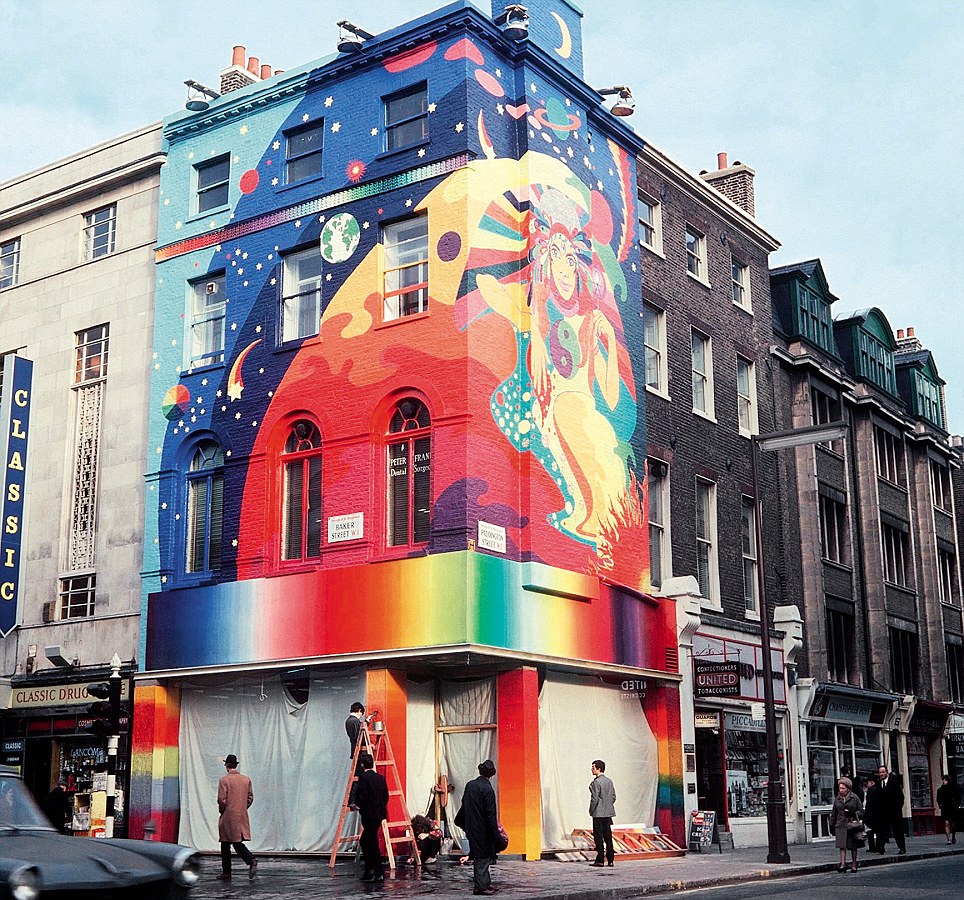



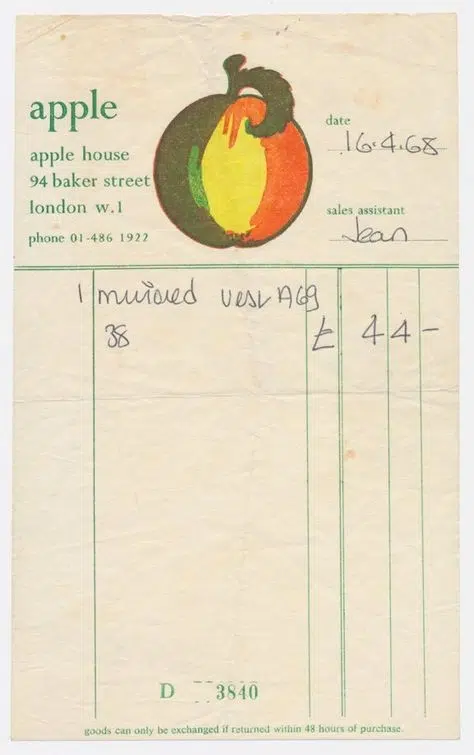
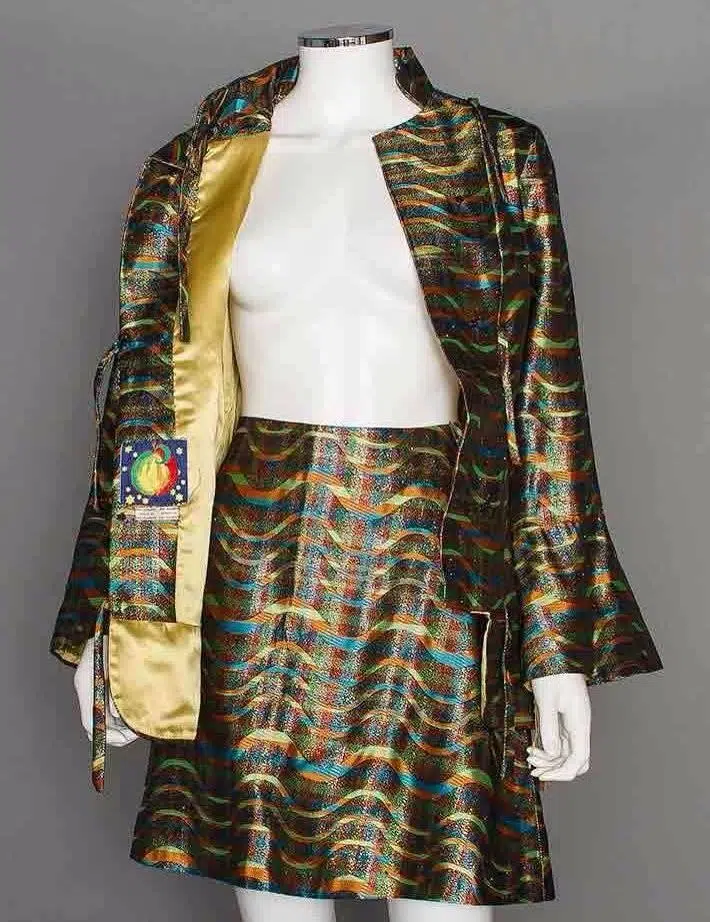
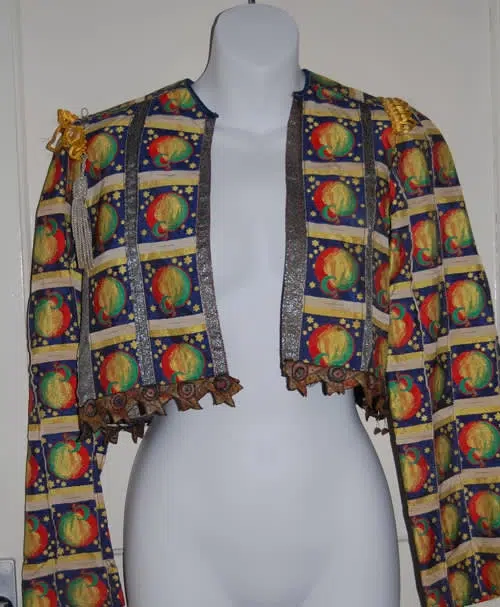
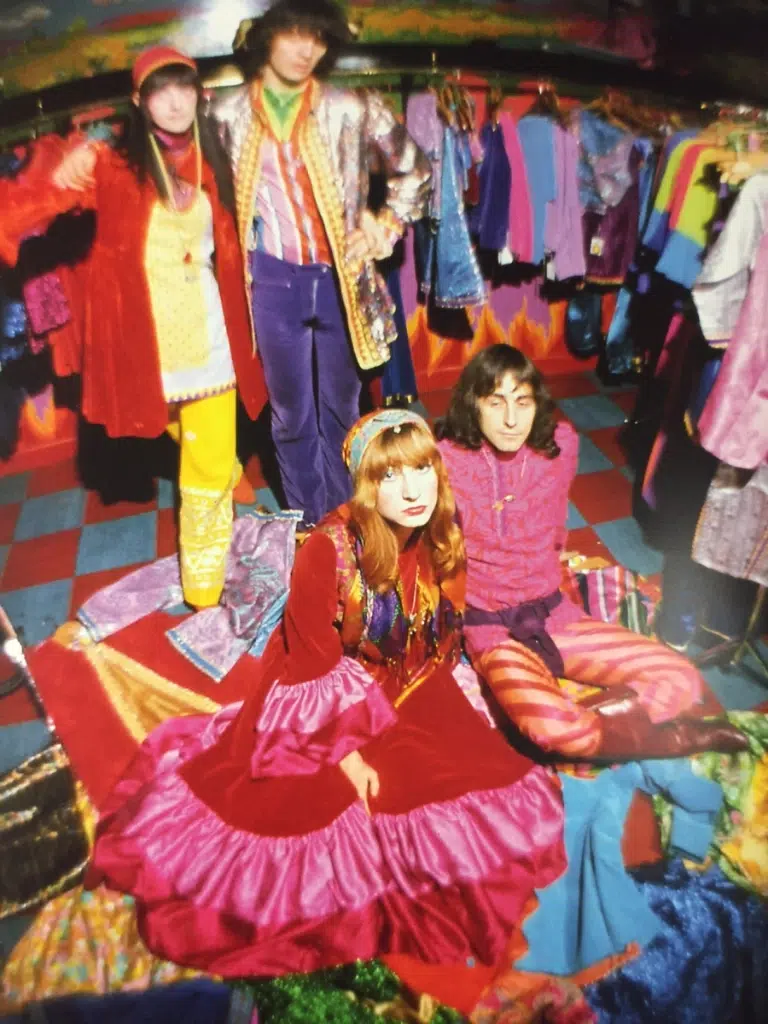
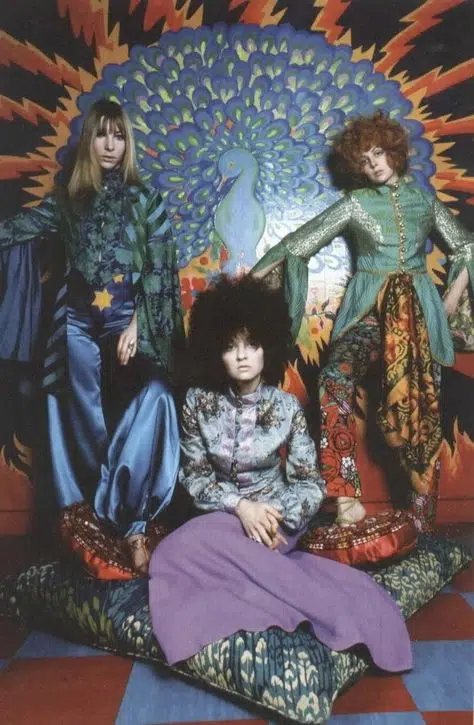
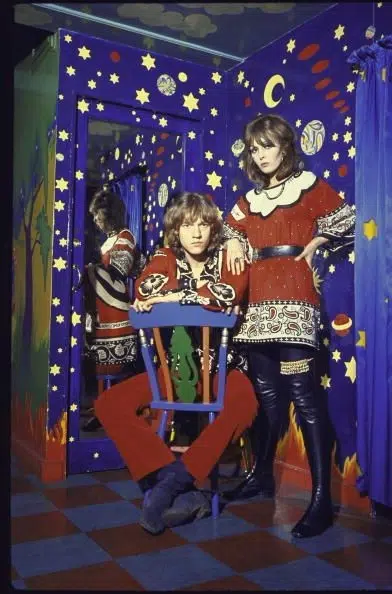


Beatles move into top gear!
BEATLES art behind a new way-out boutique to be opened later this year by hippie Dutch designers Simon and Marijke — responsible for the clothes worn by Beatle wives and other top pop people. The boutique, to be called “Apple,” will open in London’s Baker Street area in November.
George Harrison’s wife, Pattie, was initially responsible for discovering the young Dutch couple, and wore an unusual outfit made by them when she left for Greece with the Beatles earlier this year.
At the moment, Simon and Marijke design clothes for exclusive customers only — including the Rolling Stones and the Hollies.
From Disc And Music Echo – September 30, 1967

Beatles open shop: Apple of their eye!
As “Hello, Goodbye” smashed its way to the top of the chart, the Beatles have made it a historic Christmas occasion by opening a West End salon that may be the first of a similar string of shops throughout Britain. Titled “Apple,” the shop (“Don’t call it a boutique — John hates the word,” manageress Pauline Fordham told Disc) was launched with mammoth celebrity party on Tuesday night.
Official public opening is today (Thursday). The luxurious premises are at 94 Baker Street, London. Decor is by Simon and Marijke, who designed clothes for Pattie Boyd, the Hollies, Marianne Faithfull and the Rolling Stones. Financial backing for the venture was by the Beatles, who plan similar salons throughout Britain. Adds Pauline Fordham: “Clothes are designed by Josie Leeger — both for men and women. There will also be boots and shoes specially made for us, and lots of beautiful jewellery, plus imports from Morocco.”
Meanwhile, Beatles’ new single, ‘Hello, Goodbye’ has already passed the haIf-million sales mark in Britain, and earned a Silver Disc from Disc. Sales in America were over the 900,000 mark by the weekend, and should now have hit a million.
The special “Magical Mystery Tour” record package reached quarter-of-a-million sales prior to its release last Friday, but it does not show in the chart because it did not reach the shops until yesterday (Wednesday).
Beatles have now recorded their special Christmas record for their fan club. It lasts over six minutes, plays at LP speed, and is titled: “Christmas Time (Is Here Again).” Victor Spinetti — who appeared in the Beatles films, “A Hard Day’s Night” and “Help!” — is heard doing a tap-dance routine with Ringo. The full-colour sleeve shows an oil painting by John’s son, Julian, aged four. The front of the sleeve is a montage of old photographs assembled by John and Ringo. There have been 40,000 copies of this 7 in. Christmas disc pressed, and it will be made available to deejays for radio presentation during the pre-Christmas week. But it will not be on sale to the public.
On Monday, Ringo flew to Rome for filming in “Candy.” He will be back within ten days.
From Disc And Music Echo – December 9, 1967
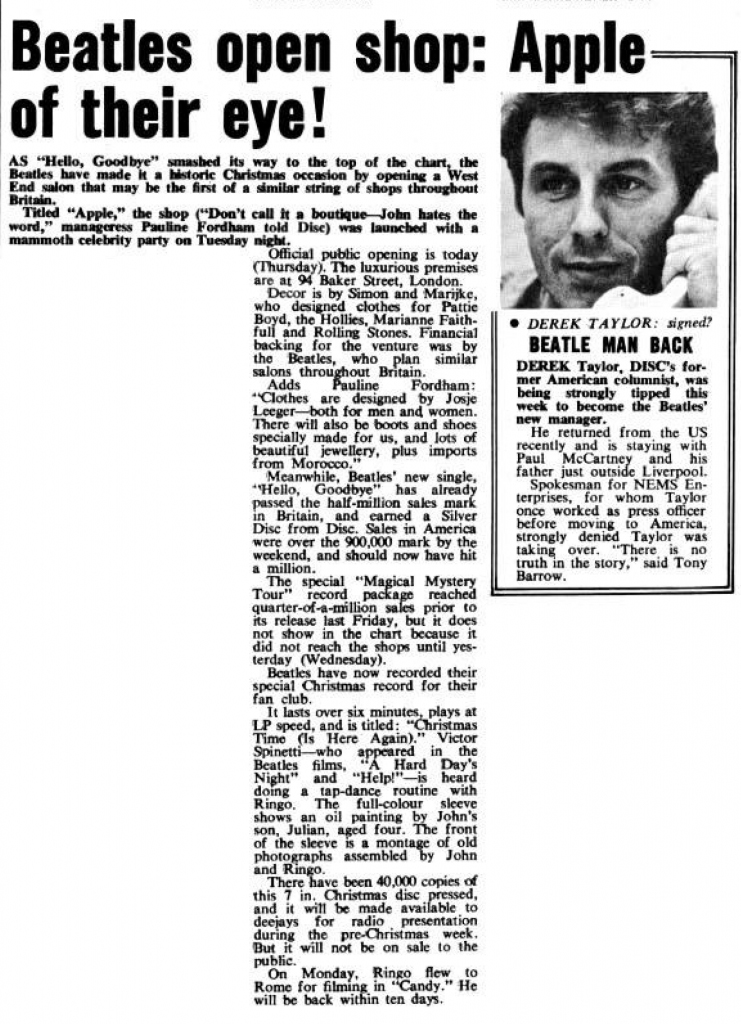
A bite at the APPLE for the Beatles
IN A BLAZE of television cameras, clowns, apples, champagne and plastic lights, APPLE, the new Beatles shop in Baker Street, London, Wl, opened its doors to an eager public last week. For three days before the opening, frozen hippies could be seen perched perilously on scaffolding high up outside the building — painting the outside in luminous psychedelia to stun the usually respectable and subdued rich neighbourhood into a heavy silence and amazed awe. Sandwiches and tea were brought in as on through the wintry night they sloshed and dabbed on the grey bricks. Finally their happy ordeal was over, and on December 5 the lights went up and on and “buy Beatles, buy best” was on its way.
Basically APPLE is a showcase shop for all the Beatles like best and believe in. Inflatable plastic furniture has been imported from Paris and sell for anything over £25, But don’t be deterred if your piggy bank has run out or your mother sniffs loudly at the mere thought of coming into your bedroom and trying to settle herself on something that resembles a beautiful white balloon. Just bounce merrily downstairs where you will find what Apple calls their ‘bazaar.’
Here you will find everything. Records, books, clothes, jewellery, even candles, handbags and shoes. There are 150 designs in 500 colours, so if you can’t find SOMETHING you like out of that lot then you’ve nobody to blame but your own extraordinary taste!
Everything here has been designed by those colourful characters The Fool — consisting of Beatles, Hollies and Stones’ friends Simon and Mar-jike, Josie and Barry. They are in splendid colours and even more splendid materials, beautiful silk for a long robe of turquoise and selling at the very reasonable price of £7, and for multi coloured scarves for just over £1. You can buy colourful bangles and joss sticks or an Afghan coat lined with sheepskin and embroidered heavily on the back from £15.
APPLE isn’t just a new boutique — it’s more a way of life, so they say. And there are a few more apples to fall off the tree and sprout up over England.
APPLE shops will open soon in Birmingham, Manchester and Liverpool. You, too, could look just like Pattie Boyd or George Harrison if you feel like it.
From Disc And Music Echo – December 16, 1967
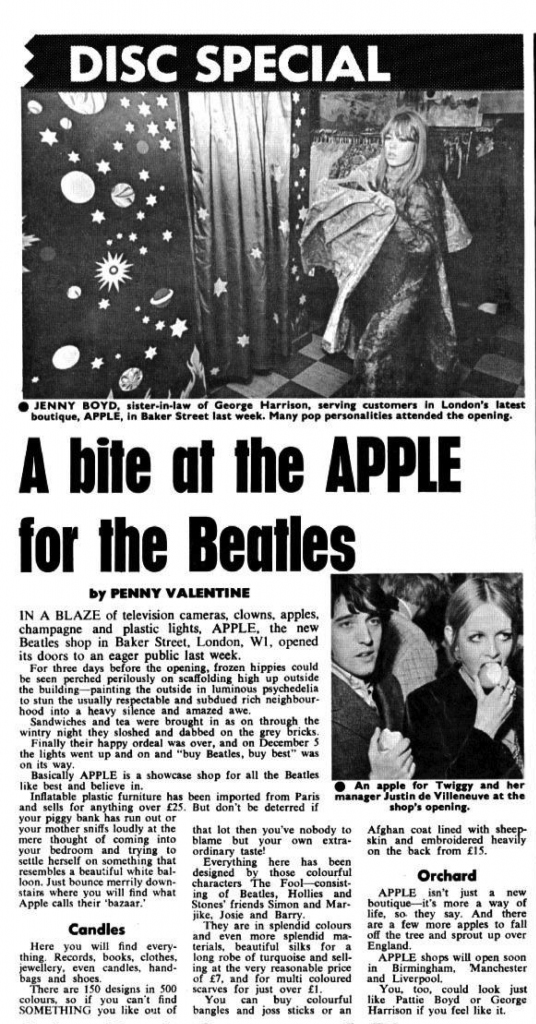
“Apple” opens!
As every Beatle follower knows Baker Street — much-famed via Sherlock Holmes — has a new tenant, “Apple”. The Beatles’ first boutique, the baby of a possible future chain, opened its doors on Thursday December 7th. The new shop was well and truly launched with a star-studded opening party on the previous Tuesday. “Come at 7.46”, the invitation said. “Fashion show at 8.16”. I and about ten thousand others — at least it seemed that many, but I believe it was actually only a few hundred, crammed into the ground floor and basement at the appointed time.
Those leaders of the psychedelic cult, Simon and Marijke Postuma, the two Dutch painters who you may remember painted pianos and things for John Lennon only a short time ago, had covered every inch of the walls and ceilings with clouds, suns, grass, trees, rainbows and skies all painted in their usual vivid colours. Unfortunately most of the wall paintings were hidden behind the mass of famous figures.
Only John and George could make the opening. Ringo was away filming in Rome and Paul had gone to Scotland. It was impossible to see exactly who was there but in the corner of the basement where I stood munching an asparagus roll and drinking — yes, you guessed it, apple juice, were D.J.s Alan Freeman, Chris Denning, Jonathan King, Kenny Everett, Beatles recording Manager George Martin, George’s wife Patti, Cilla Black, Julia Foster, and I understand that Twiggy was on the other side of the room with her Manager, Justin de Villeneuve, and film director, Dick Lester.
There were no clothes at all in the shop on the party night – a good job too otherwise half of us would not have been able to get in. But the next day it was panic stations as masses of trendy-gear were delivered and arranged behind the covered windows ready for the public opening on the following morning.
Manager of “Apple” is Pete Shotton. You may recognise that name because he was one of the original members of John Lennon’s first skiffle group, the Quarrymen, which was formed over 124 years ago. Pete has taken a big hand in running the partly Beatle-owned supermarket at Hayling Island and has done so well there that the boys asked him to take charge of their first venture in the rag trade — sorry, I meant boutique business.
Pete asked me to point out that the shop doesn’t only stock hippy-gear, there are stacks of clothes for every modern mind. Although, of course, Simon and Marijke have come up with some marvellous new designs for hippy minded people!
From the Beatles Monthly Book, N°54, January 1968
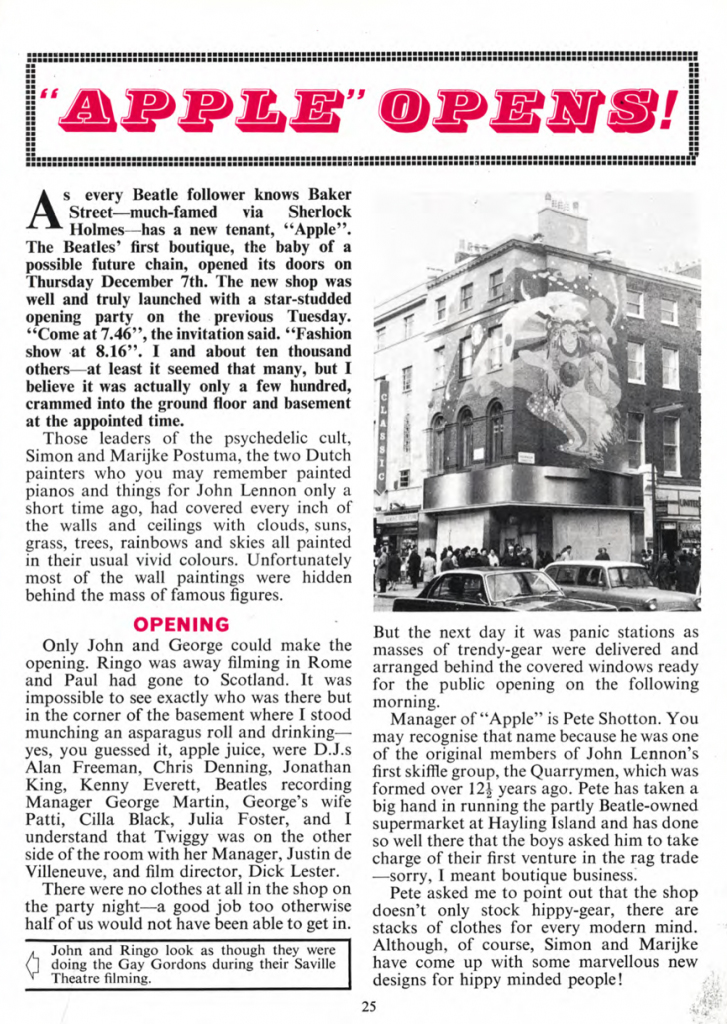
The Beatles Diary Volume 1: The Beatles Years
"With greatly expanded text, this is the most revealing and frank personal 30-year chronicle of the group ever written. Insider Barry Miles covers the Beatles story from childhood to the break-up of the group."
We owe a lot to Barry Miles for the creation of those pages, but you really have to buy this book to get all the details - a day to day chronology of what happened to the four Beatles during the Beatles years!
If we modestly consider the Paul McCartney Project to be the premier online resource for all things Paul McCartney, it is undeniable that The Beatles Bible stands as the definitive online site dedicated to the Beatles. While there is some overlap in content between the two sites, they differ significantly in their approach.

Notice any inaccuracies on this page? Have additional insights or ideas for new content? Or just want to share your thoughts? We value your feedback! Please use the form below to get in touch with us.